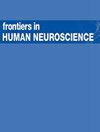Frontiers | Close approximations to the sound of a cochlear implant
IF 2.4
3区 医学
Q3 NEUROSCIENCES
引用次数: 0
Abstract
Cochlear implant (CI) systems differ in terms of electrode design and signal processing. It is likely that patients fit with different implant systems will experience different percepts when presented speech via their implant. The sound quality of speech can be evaluated by asking single-sided-deaf (SSD) listeners fit with a cochlear implant (CI) to modify clean signals presented to their typically hearing ear to match the sound quality of signals presented to their CI ear. In this paper, we describe very close matches to CI sound quality, i.e., similarity ratings of 9.5 to 10 on a 10-point scale, by ten patients fit with a 28 mm electrode array and MED EL signal processing. The modifications required to make close approximations to CI sound quality fell into two groups: One consisted of a restricted frequency bandwidth and spectral smearing while a second was characterized by a wide bandwidth and no spectral smearing. Both sets of modifications were different from those found for patients with shorter electrode arrays who chose upshifts in voice pitch and formant frequencies to match CI sound quality. The data from matching-based metrics of CI sound quality document that speech sound-quality differs for patients fit with different CIs and among patients fit with the same CI.前沿 | 人工耳蜗声音的近似值
人工耳蜗(CI)系统在电极设计和信号处理方面各不相同。植入不同植入系统的患者在通过植入体聆听语音时可能会有不同的感受。可以通过让植入人工耳蜗(CI)的单侧耳聋(SSD)听者修改其典型听力耳的纯净信号,使其与植入 CI 耳的信号音质相匹配,来评估语音的音质。在本文中,我们描述了十名安装了 28 毫米电极阵列和 MED EL 信号处理器的患者与 CI 音质非常接近的情况,即相似度在 10 分制中达到 9.5 到 10 分。为接近 CI 音质所需的修改分为两组:一类是限制频率带宽和频谱模糊,另一类是宽频带宽和无频谱模糊。这两组修饰都不同于电极阵列较短的患者,后者选择上移声调和共振频率来匹配 CI 音质。基于匹配的 CI 音质度量数据表明,使用不同 CI 的患者和使用相同 CI 的患者的语音音质是不同的。
本文章由计算机程序翻译,如有差异,请以英文原文为准。
求助全文
约1分钟内获得全文
求助全文
来源期刊

Frontiers in Human Neuroscience
医学-神经科学
CiteScore
4.70
自引率
6.90%
发文量
830
审稿时长
2-4 weeks
期刊介绍:
Frontiers in Human Neuroscience is a first-tier electronic journal devoted to understanding the brain mechanisms supporting cognitive and social behavior in humans, and how these mechanisms might be altered in disease states. The last 25 years have seen an explosive growth in both the methods and the theoretical constructs available to study the human brain. Advances in electrophysiological, neuroimaging, neuropsychological, psychophysical, neuropharmacological and computational approaches have provided key insights into the mechanisms of a broad range of human behaviors in both health and disease. Work in human neuroscience ranges from the cognitive domain, including areas such as memory, attention, language and perception to the social domain, with this last subject addressing topics, such as interpersonal interactions, social discourse and emotional regulation. How these processes unfold during development, mature in adulthood and often decline in aging, and how they are altered in a host of developmental, neurological and psychiatric disorders, has become increasingly amenable to human neuroscience research approaches. Work in human neuroscience has influenced many areas of inquiry ranging from social and cognitive psychology to economics, law and public policy. Accordingly, our journal will provide a forum for human research spanning all areas of human cognitive, social, developmental and translational neuroscience using any research approach.
 求助内容:
求助内容: 应助结果提醒方式:
应助结果提醒方式:


